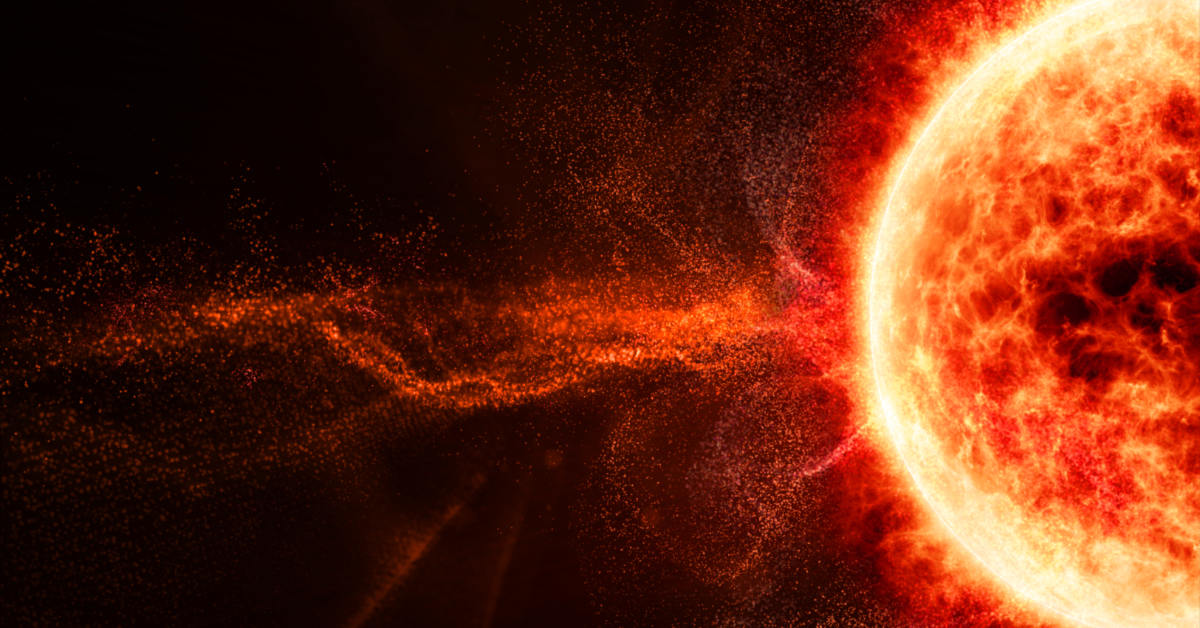Our planet has experienced many solar storms throughout its history. These storms have an even greater impact on our world now, with the power to shut down entire cities, regions, and potentially even more. We experienced a minor solar storm this past weekend, but scientists warn that future events could be much more devastating. (1)
Last Weekend’s Solar Storm
This past weekend, a solar storm traveling at 500km per second entered the Earth’s atmosphere. While that may sound really scary, scientists classified this one as a G1 storm. This means that it was only actually capable of causing weak power grid fluctuations and a small impact on our satellites. (2) Experts warn, however, that a stronger storm is not a matter of if it will happen, but when. It is important that we understand these space weather systems so that we can be prepared. (1)
Read: 50 Years Ago NASA Sent a Map Into Space to Help Aliens Find Earth—Now They’ve Got An Awesome Update
What Is A Solar Storm?
A solar storm is when the Earth’s star, the Sun, releases a flare. This flare sends a lot of energy out into space. These flares have the potential to hit Earth; however, most of them are completely harmless. Sometimes, though, the Sun releases a particularly powerful flare. If these flares enter Earth’s atmosphere, they can wreak havoc on our technology systems. (1)
Scientists have so far figured out that the Sun experiences what are called “extreme solar flares” roughly every 25 years. The last of these that hit Earth happened in 1989. The storm all but completely shut down the entire province of Quebec in Canada. These storms also have the power to block satellite signals, effectively shutting them down. Unfortunately, it is next to impossible to determine when and where these major storms might hit and who will be affected. Major solar storms can cause major problems on Earth, especially as we have become increasingly more reliant on technology in nearly every aspect of our lives. (1)
“In the worst case, the direct and indirect costs are likely to run into trillions of dollars with a recovery time of years rather than months,” explained risk consultancy firm Drayton Taylor. “The probability of an event of that size happening is estimated by the UK’s Royal Academy of Engineering as one in 10 in any decade.” (1)
Read: ‘Space hurricane’ that rained electrons observed for the first time
The 1582 Solar Storm
One of the first-ever recorded solar storms occurred in 1582. Though they didn’t have the technology that we do now to notice it, what they did see were auroras. The difference with these auroras is that they were seen much further south than usual. People saw them at latitudes as low as 28 degrees, which is in line with what is now Florida, Egypt, and Southern Japan. (3)
“All that part of the sky appeared burning in fiery flames; it seemed that the sky was burning,” wrote Lisbon eye-witness and 16-th century author Pero Ruiz Soares. “Nobody remembered having seen something like that… At midnight, great fire rays arose above the castle which were dreadful and fearful. The following day, it happened the same at the same hour but it was not so great and terrifying. Everybody went to the countryside to see this great sign.” (3)
Looking back on historical records, astronomers and scientists have found that major solar storms such as this one occur at least once every century. It’s still early in the 21st century, and we are due for our quota. (3)
A Multi-Trillion Dollar Disaster Waiting to Happen?
Today, particularly with our heavy reliance on technology, a major solar storm like the one that caused southern auroras in 1582 and shut down Quebec in 1989 could cause multi-trillions of dollars worth of shut-downs and damage. The goal of solar astronomy is to study how the sun and space weather interact and how, together, they cause these types of storms. This way, scientists can better predict when a major solar storm might be coming so we can somehow be more prepared. (4)
Keep Reading: Pool installation unearths bones that date back to ice age
Sources
- “Solar storm travelling at 1.8million km per hour to hit Earth.” Express. Sean Martin. May 2, 2021.
- “What’s up in space.” Space Weather
- “A powerful solar storm hit Earth back in 1582.” Phys. Scott Alan Johnston. March 26, 2021.
- “This Multi-Trillion Dollar Disaster Is Coming, And Solar Astronomy Is Our Prime Defense.” Forbes. Ethan Siegel. January 31, 2020.

